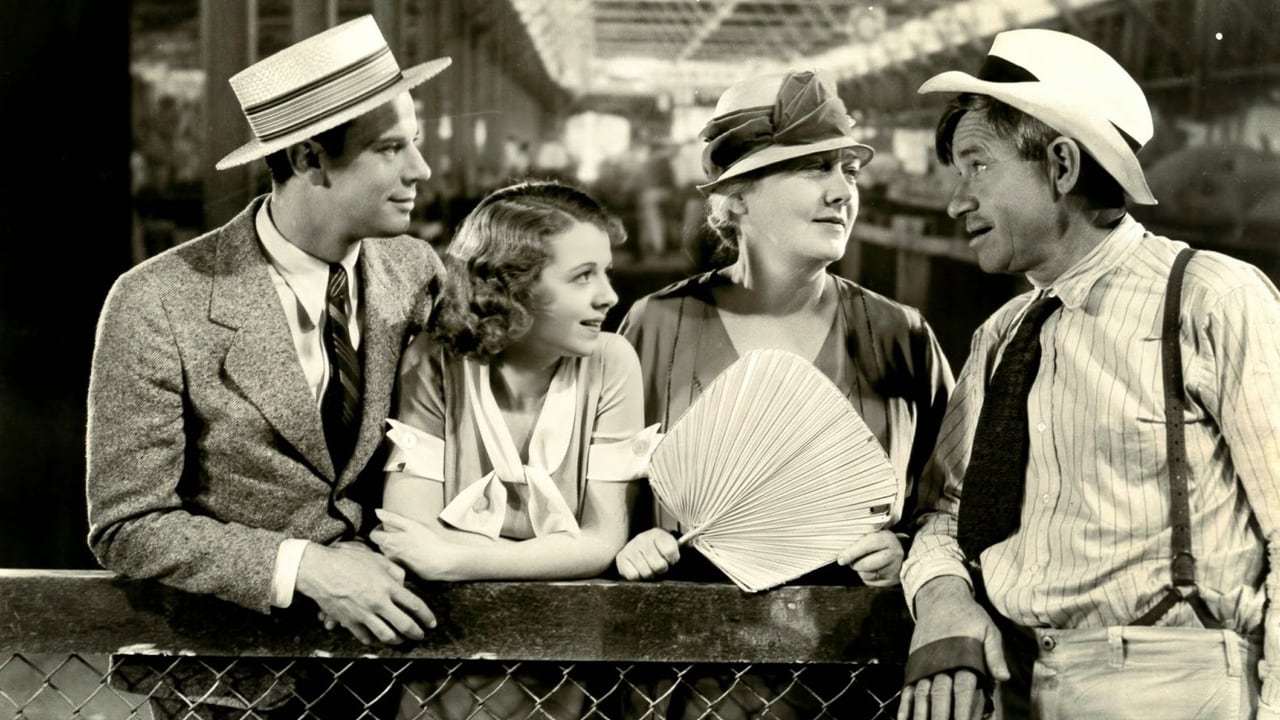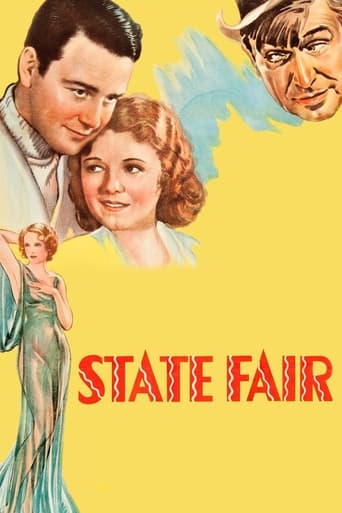Cathardincu
Surprisingly incoherent and boring
Afouotos
Although it has its amusing moments, in eneral the plot does not convince.
Rio Hayward
All of these films share one commonality, that being a kind of emotional center that humanizes a cast of monsters.
Zlatica
One of the worst ways to make a cult movie is to set out to make a cult movie.
tavm
Having previously watched both the 1945 and 1962 musical versions of this film, and knowing YouTube had this non-musical version on its site for the last several years, I finally watched this version of State Fair just now. Other than the added songs in the later versions, this is basically the same story for all three...well, except since this one was produced before the Production Code became more strict, it's implied the male teen had something of a real affair with a female performer. (Though I didn't see the scene of them talking off-screen while the bed on-screen was messed up with another scene of a lingerie on the floor during that. Must have been cut after the Code was enforced.) The humor is both verbally subtle and occasionally visual like when the Janet Gaynor character is on somebody's shoulder and she unknowingly plays with that someone's head when she gets excited about a certain horse in a race. Will Rogers as the father is his charming self as he looks after his pig he hopes wins the big contest. And I always loved when the mother (in this version, Louise Dresser) enters her pickles and mincemeat in another contest because of what is in those foods when they're entered! By the way, I like all three versions but if you don't want to hear those songs, I definitely recommend this version of State Fair.
MartinHafer
The musical version of "State Fair" (1945) is one of my favorite films of the 1940s. Because of this, I really wanted to see the original version from 1933, but it took me years until I was able to find it. Now that I've seen it, I feel a bit let down. It was a good film--but after all that wait, I had hoped for more. In fact, it's a decent film but not as good as the 1945 version.For the most part, the plot is exactly the same in both versions. However, since the 1933 film came out before the new Production Code was adopted, the movie clearly has a much more adult portion of the story. When the family is off at the state fair having fun, the son has A LOT of fun--and clearly it's implied that he was having sex with a performer he'd met there. The film had the same plot (except for the huge exception above) but it lacked the sweetness and homespun feel that the later version had. It is good--just not as good.
thewebbiest
I was glad I caught this sweet movie on TCM. It is a marvellous early talkie, which seems a lot more real and honest that the subsequent musical version of State Fair. The movie captures the affections, frustrations and longings of the Frake family. In the case of the younger Frakes, it's a longing for love and sex. (The Frake parents are mostly concerned with winning blue ribbons for their preserves and hog.) The pre-code element is clearly seen in the son's scenes with the lady trapeze artist, which strongly suggest that they're having sex.The romance between Janet Gaynor and Lew Ayres is really touching. Gaynor is torn between her desire for fun and passion versus the security her beau at home will offer her. Ayres asks if she loves the hometown boy and she replies "I know he will always love me." Lew Ayres is just gorgeous in this movie. A real sharp dressed city sophisticate that Gaynor is terribly attracted to but also a little bit afraid of, particularly when he talks about having been with many other women.State Fair also conveys Will Rogers' tremendous likability better than his other cinematic outings. He was incredibly popular in his day, king of all media: the stage, print (through his syndicated newspaper column), radio and film.
Jozef Kafka
This is an ensemble piece, so Will Rogers must share screen time not only with top-billed Janet Gaynor as the daughter but also future director Norman Foster as the son (for those who care, Foster is OK but his slow speaking style and overage juvenile manner probably would've ended up limiting his roles even if he hadn't switched to directing). There was a notable technical moment, where we see and hear the midway barkers telling us it's the last performance of the fair, the last night, last chance, etc... Then we go to the next scene of Janet Gaynor and Des Moines reporter Lew Ayres bittersweetly visiting the isolated spot of their tryst the night before -- and we still hear the barkers' warnings of "last night" and "last chance". A few moments remind us this was made pre-code. Just before the family leaves for the fair, an antsy Gaynor tells Foster, "Haven't you ever felt like going someplace and raising hell?" But the real jaw-droppers come in the relationships between the farm kids and their big city romances. It's clearly implied that Gaynor and Ayres have sex. As far as Foster and carny acrobat Sally Eilers are concerned, it's a lot more than implied: it's even the subject of a joking exchange between Foster, oblivious mother Louise Dresser and a possibly suspicious Rogers. This seems like an odd thing to include in what is presented as a family film, but perhaps the term "family film" meant something different in 1933, and rural audiences weren't quite so naive as we like to think. Another moment near the end gives us an earthiness missing in the squeaky clean musical version. Leaving with the family in their truck the morning after the fair, Rogers tell his hog, "Well Blueboy, you're a prize winner today, and ham tomorrow." This reminder of the reality of farm life also recalls the famous story where somebody asked Rogers if he actually ate the hog after the film wrapped production. Rogers replied, "No, I just couldn't bring myself to eat a fellow actor". 60 years later Billy Crystal would steal this line re: the calf in City Slickers.

